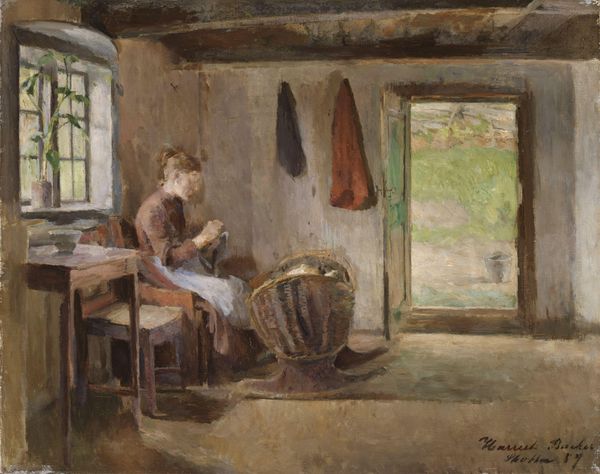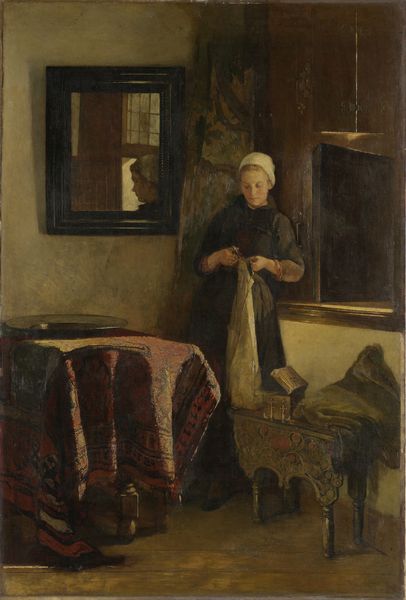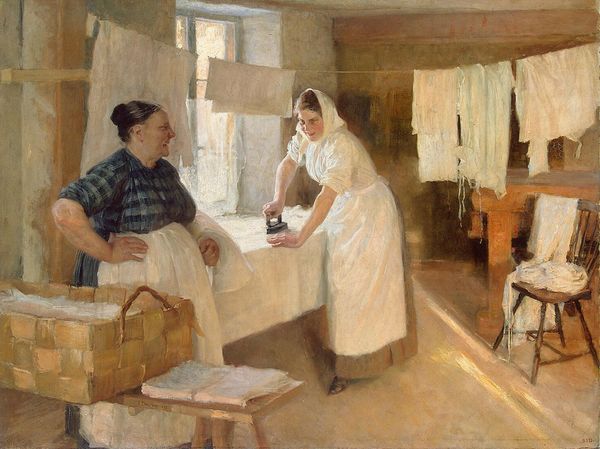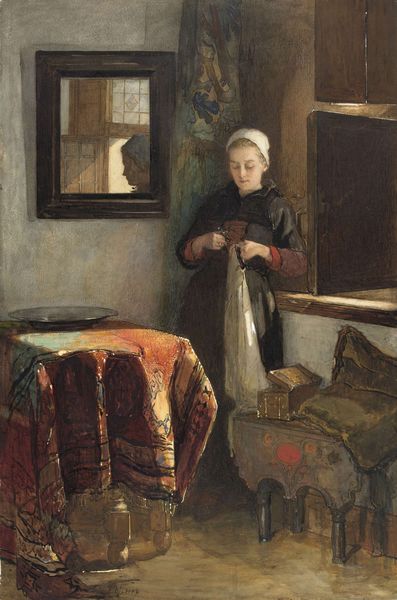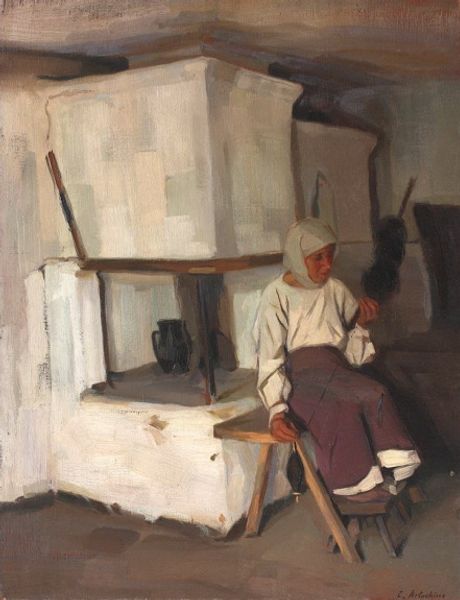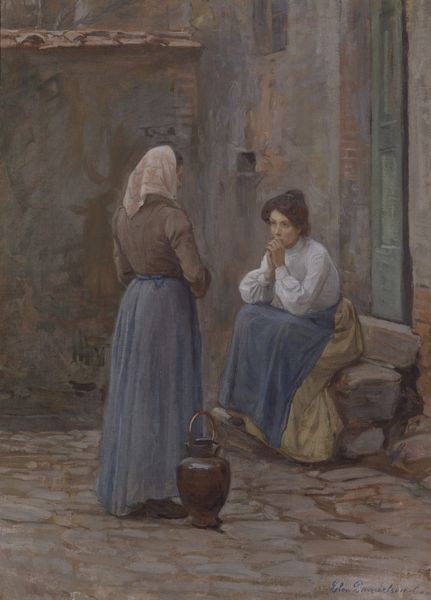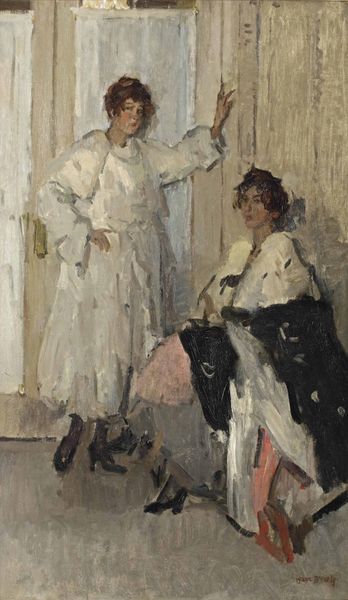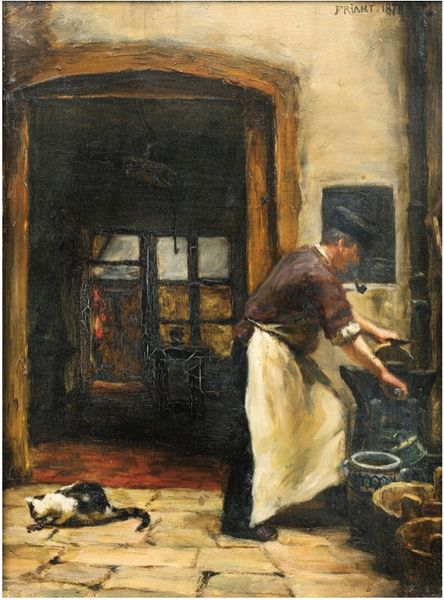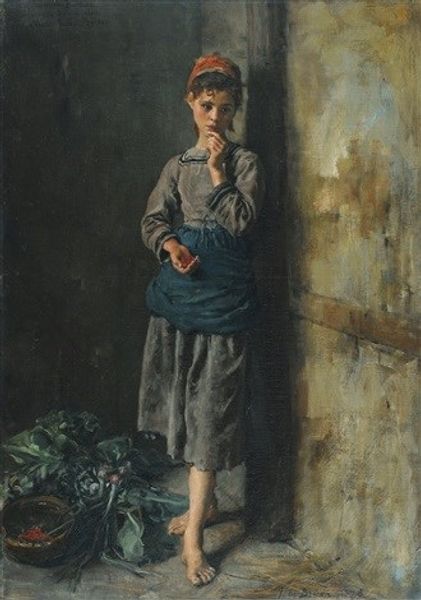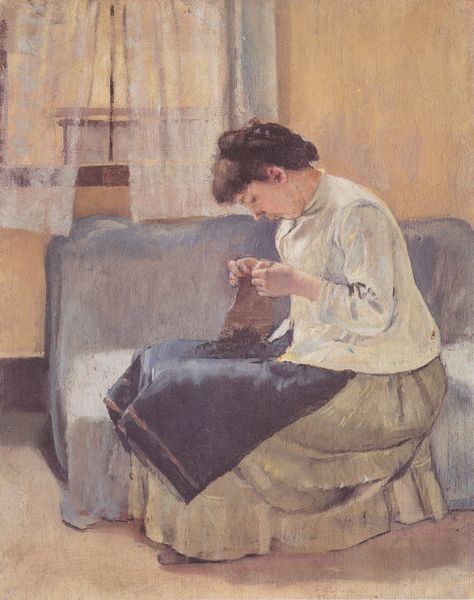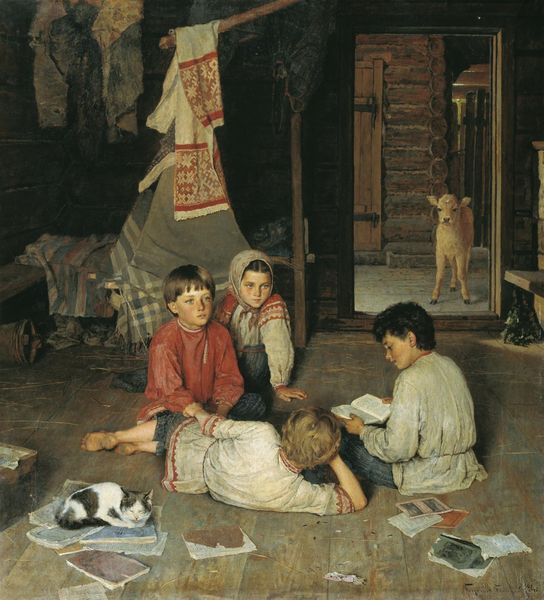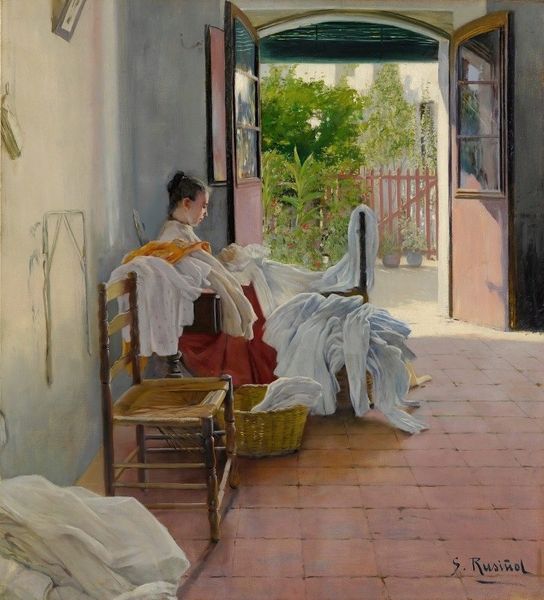
Dimensions: support: 915 x 1170 mm
Copyright: © Tate | CC-BY-NC-ND 4.0 DEED, Photo: Tate
Editor: Albert Rutherston’s “Laundry Girls,” shows two women in a sparse room tending to laundry. The scene feels very intimate, almost voyeuristic. What story do you think Rutherston is trying to tell? Curator: It’s interesting to consider what Rutherston, as a male artist, might be communicating about women’s labor. How does framing this domestic scene contribute to the narrative around women in the early 20th century? Editor: I hadn't thought of it that way. It does make me question the intent behind depicting such a mundane, yet essential task. Curator: Precisely. Consider how paintings like these contributed to shaping societal perceptions of women's roles and their place in the public sphere. Editor: It’s fascinating to see how social context influences our perception of art. Thanks! Curator: Absolutely! The dialogue between art and society is always evolving.
Comments
tate 8 months ago
⋮
http://www.tate.org.uk/art/artworks/rutherston-laundry-girls-n04996
Join the conversation
Join millions of artists and users on Artera today and experience the ultimate creative platform.
tate 8 months ago
⋮
Albert Rutherston was the younger brother of the artist William Rothenstein and collector Charles Rutherston. Albert and Charles changed their surname from Rothenstein to Rutherston in 1914, at the beginning of the First World War. Albert Rutherston was trained at the Slade and began painting in a realistic style. He liked to choose subjects from daily life. These two laundry girls are marking linen to distinguish the items for return to owners. The models actually sold fruit and vegetables from a stall and had also sat for the painter Walter Sickert. Gallery label, February 2016

